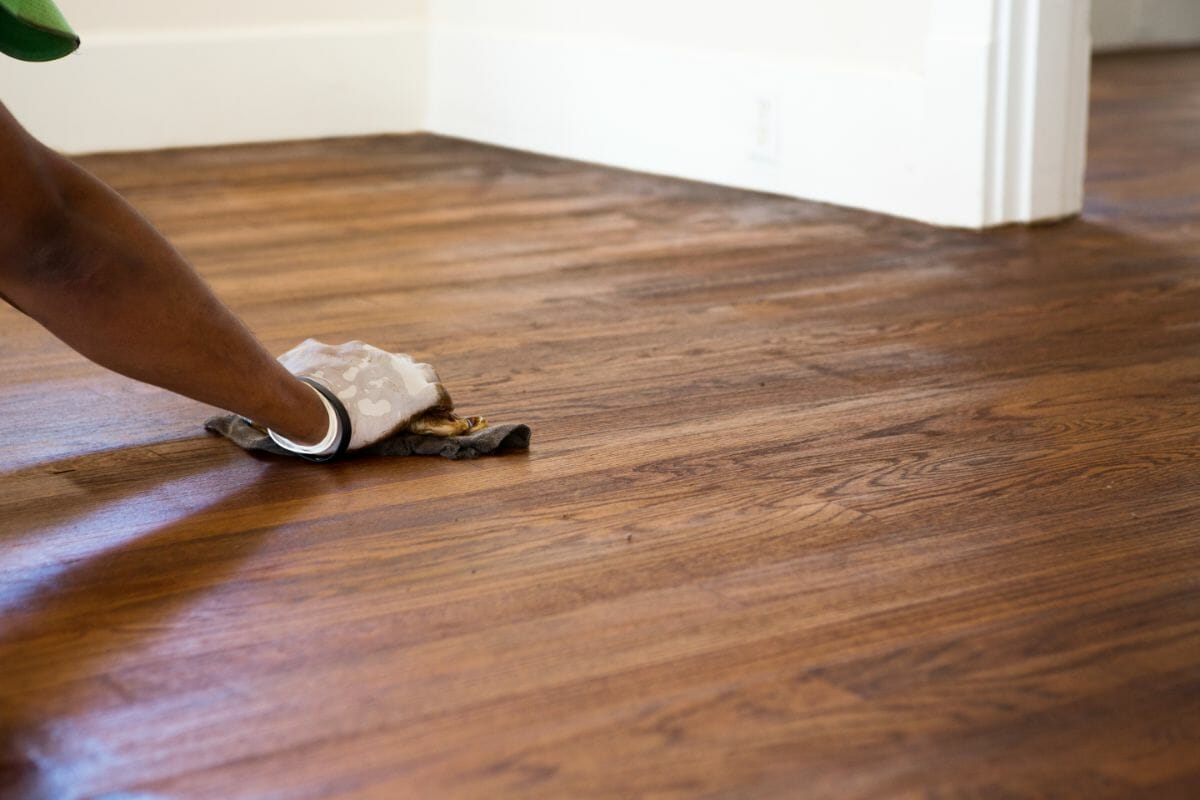Pine-Sol is a common household cleaner that contains a mixture of water, detergent, and pine oil.
Pine-Sol has become very popular because it cleans well without leaving behind residue or streaks.
Pine-Sol is also known as phenol formaldehyde resin. PF is a type of synthetic resin that is commonly used in cleaning agents, adhesives, paints, coatings, sealants, and plastics.
Pine Sol is toxic to humans and animals. If you accidentally inhale its fumes, you can experience serious health problems such as respiratory irritation, headaches, dizziness, nausea, vomiting, and even death.
It’s important to wear protective gear when using this product.
Is Pine-Sol Safe To Use On Wood Floors?
Wood is one of the hardest substances known to man. This makes it extremely durable and resilient, but also very sensitive.
When exposed to moisture, the wood begins to swell, warp, crack and can even develop mold.
If you don’t protect it properly, your beautiful wooden floors could end up looking worn.
In addition to being unsightly, damaged floors can lead to serious health problems.
They can trap dust mites, bacteria, and mold spores, making your home less healthy and inviting.
They can also harbor insects that carry diseases such as head lice and scabies.
And since hardwoods are porous, they’re easy to stain and can attract dirt and grime easily.
So, how do you clean your hardwood floors without damaging them? There are many ways, including steam cleaning, hot water extraction, and power washing.
But the safest way is to use a mild cleaner designed specifically for wood floors.
The Importance Of Avoiding Moisture On Hardwood Floors
Hardwood floors are generally considered one of the best options for homeowners looking to go green.
They’re durable, easy to clean, and require little maintenance.
And while they do cost more than other types of flooring, they’re worth every penny.
However, there are some things you should know about them, including how water affects them.
Moisture is a big problem for many wooden products, especially those made of wood.
Wood absorbs moisture quickly, and it can cause problems like warping and splitting.
Water can also seep into cracks in the floorboards, causing mold and mildew to grow.
If left untreated, the growth of bacteria can lead to health hazards.
So what exactly happens when you let water sit on a hardwood floor? Well, the wood itself starts to rot.
As the moisture gets absorbed, the cells break down, and the material begins to disintegrate.
Eventually, the entire floorboard becomes unusable.
That’s where the use of a dehumidifier comes in handy. These machines pull out excess humidity from the air, and they keep it away from the wood.
A study conducted by the organization found that homes with too much humidity tend to have lower energy bills, fewer dust mites, and fewer allergies.
This is because the air inside your home tends to be drier than outside air, making it easier to breathe.
So if you want to make sure your house stays healthy, consider investing in a dehumidifier.
You’ll find plenty of models online, and they typically run around $100-$300.
How Do I Clean My Hardwood Floor With Pine Sol?

Hardwood floors are an investment, and cleaning them takes time.
But there are ways to keep them looking good while keeping your budget intact.
Here’s what you need to know about cleaning hardwood floors.
You should never pour Pine Sol directly onto your wooden floor. Instead, mix the Pine-Sol with warm water in a bucket or other container.
Then apply the solution to the area where you want to clean. Let the solution sit for at least 15 minutes before rinsing off with hot water.
The Importance Of Using The Right Mop
If you’re looking for a good way to keep your floors clean without spending too much money, look no further than a mop.
A mop is one of the easiest ways to clean up spills and wipe away dirt – but don’t forget to give them a good vacuum first.
But there are different types of mops, and some mops work better than others.
To make sure you’re choosing the best type of mop, here are four things to consider.
1. Material
Some mops come in a variety of materials, including plastic, wood, foam, cloth, etc.
These mops generally fall under three categories: disposable, reusable, and washable.
Disposable mops are cheap, but they won’t last very long. Reusable mops tend to hold up longer, but they cost more.
Washable mops usually cost less than reusable mops, but they aren’t designed to last forever.
You’ll want to choose a mop based on how often you plan to use it and whether you plan to reuse it.
2. Pads
Mops come in a wide range of sizes, and most people use a smaller size because it fits in their hands easier.
However, larger mops are great for cleaning bigger areas.
When picking a pad, look for something that’s soft enough to absorb liquid without absorbing too much moisture.
Also, make sure that the pad is removable and easy to change.
3. Automatic Wringers
An automatic wringer makes mopping much faster and easier.
Most automatic wringers squeeze the mop head dry, making the mop ready for another round of cleaning.
Look for a model with a built-in wringing mechanism. Also, make sure the wringer doesn’t damage the mop itself.
What Are Some Great Alternatives To Pine Sol?
There are many products available that contain similar ingredients to Pine Sol, but they don’t have the same harmful effects. Some of these include:
- Baking soda
- Borax
- Castile soap
- Dishwashing liquid
- Drano
- Lye
- Simple Green
- Washing Soda
- White Vinegar
Final Thoughts
Pine-Sol isn’t just for cleaning your kitchen counters. It can also help clean your bathroom, laundry room, garage, basement, and even your car! Just remember to follow all safety precautions when using this product.

Leave a Reply
You must be logged in to post a comment.